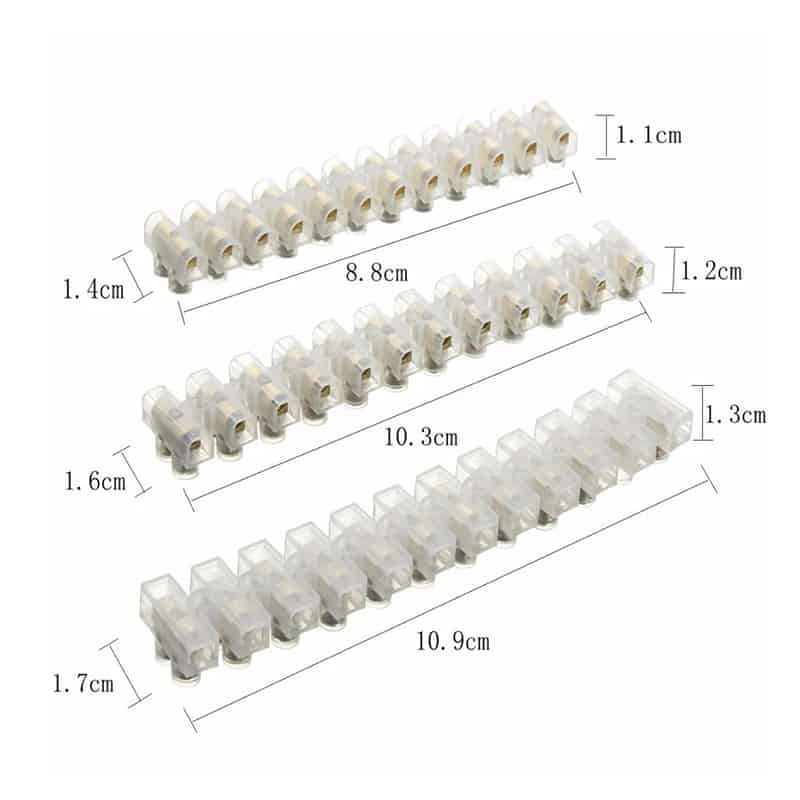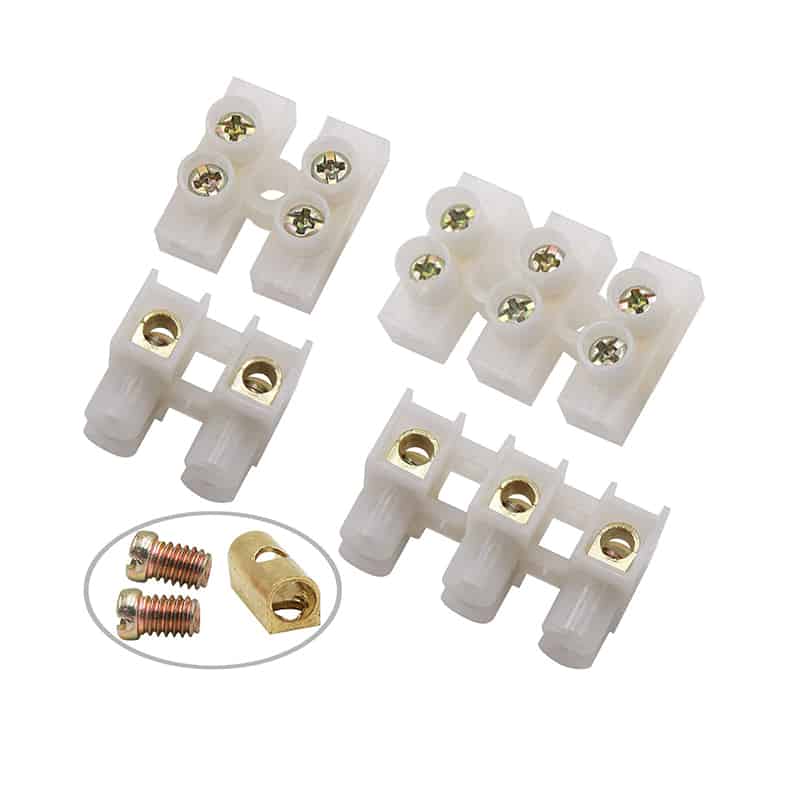One of the big questions homeowners and electricians have is, “Can you reuse push-in wire connectors?” Push-in connectors are great because they are easy to use. But, if you reuse them improperly, you can have electrical failures and safety hazards. We’ll cover whether you can reuse push-in wire connectors and the conditions under which you can reuse them without compromising the safety of the electrical system.

What Are Push-in Wire Connectors?
Push-in wire connectors are small electrical components designed to simplify the process of joining two or more wires. Unlike traditional screw-based connectors, push-in connectors allow users to insert a stripped wire into a pre-fitted hole without the need for twisting or tightening screws. These connectors are widely used in residential, commercial, and industrial wiring applications due to their simplicity and quick installation process.
One of the main advantages of push-in wire connectors is that they offer a tool-free method for making secure electrical connections. This makes them particularly useful in tight spaces or for projects where speed is important. Additionally, they help reduce the risk of loose connections, which can occur with traditional screw-on connectors if not installed properly. Push-in connectors are also preferred for their ability to minimize wire damage, as no twisting or excessive force is required during installation.

How Push-in Wire Connectors Work
Push-in wire connectors work using an internal mechanism, typically a metal spring or clip, which holds the wire securely in place once it’s inserted. The stripped end of the wire is pushed into the connector, and the internal spring grips the wire, creating a solid electrical connection. This grip ensures that the connection remains tight, even when subjected to vibration or movement within the electrical system.
Compared to traditional twist-on connectors, push-in connectors offer a cleaner, more efficient method of making wire connections. With twist-on connectors, the user must manually twist the wires together and then cap them, which requires more effort and can be inconsistent depending on the person’s technique. In contrast, push-in connectors standardize the connection process, reducing the chance of user error. However, despite these advantages, it’s important to understand whether these connectors can be reused without compromising safety.
Are Push-in Wire Connectors Reusable?
The short answer is: yes, push-in wire connectors can be reused in some cases, but only under certain conditions. Many manufacturers design push-in connectors to be used once, but some high-quality connectors may be reusable, depending on their condition and the manufacturer’s specifications.
When Reuse is Acceptable
Push-in connectors can be reused if they remain in good condition after the initial installation. This means that if the connectors were not damaged during installation or removal, they might still function correctly. Manufacturers sometimes indicate that their push-in connectors can be reused as long as the internal spring or clip is undamaged, maintaining its ability to securely hold the wire in place.
For instance, if you are simply upgrading a fixture or adding a wire to a connection, you may be able to reuse the connectors as long as they have not been damaged or excessively worn. In these cases, the connection remains tight, and the wires remain properly seated, ensuring a safe and effective electrical bond.

When Reuse is Not Recommended
However, it’s important to know that reusing push-in wire connectors is not always recommended. Over time, the internal spring or gripping mechanism may weaken, making it difficult to maintain a solid connection. Additionally, the plastic housing may become deformed or cracked if the connector was removed improperly or subjected to excessive force. In such cases, reusing the connector can lead to loose connections, which can result in arcing, overheating, or even fires.
Another factor to consider is that connectors may wear down during their initial use. Once a wire has been inserted, the metal gripping mechanism can become less effective, reducing the connector’s ability to securely hold another wire. If there’s any visible damage or signs of wear on the connector, it’s best to replace it entirely rather than risk electrical issues.
How to Check if a Push-in Wire Connector Can Be Reused
Before deciding whether to reuse a push-in wire connector, it’s important to inspect it thoroughly. Here are some key indicators to help you determine whether the connector is safe for reuse:
Signs That a Connector is Reusable:
- No Visible Damage: Check the connector for any visible signs of wear and tear, such as cracks, warping, or discoloration. If the plastic housing is intact, the connector may still be functional.
- Firm Clamping Force: Test the connector’s clamping mechanism by reinserting a wire. If the wire is held securely and there is no movement, the internal spring may still be in good condition.
- No Signs of Overheating: Inspect the connector for burn marks or discoloration, which may indicate overheating. An overheated connector is no longer safe to reuse, as it may have suffered internal damage.

Steps for Safe Removal and Reuse:
- Turn Off Power: Always turn off the power at the circuit breaker before attempting to remove or reuse any electrical connector.
- Remove Wires Gently: When removing a wire from a push-in connector, gently pull the wire while depressing any release tabs (if present). Avoid excessive force, as this can damage the internal mechanism.
- Inspect the Connector: After removal, thoroughly inspect the connector for any signs of damage or wear.
Remember, if there is any doubt about the integrity of the connector, it’s always safer to replace it rather than reuse it.
Safety Considerations for Reusing Push-in Wire Connectors
While reusing push-in wire connectors may seem like an efficient option, safety should always come first. Loose or faulty connections can result in electrical fires, short circuits, or damage to appliances. Here are some key safety tips to keep in mind:
- Always Follow Manufacturer Guidelines: Manufacturers often provide detailed guidance on whether their connectors can be reused. Follow these instructions carefully to avoid any risks.
- Electrical Code Compliance: In some regions, electrical codes may restrict or prohibit the reuse of certain types of connectors. Ensure that your work complies with local electrical regulations to avoid potential hazards.
- Regular Inspection: If you decide to reuse a push-in connector, make sure to regularly inspect the connection to ensure that it remains tight and secure over time.
Alternatives to Reusing Push-in Wire Connectors
While it’s possible to reuse some push-in connectors, purchasing new connectors is often the safer and more reliable choice. New push-in connectors are relatively inexpensive, and using a fresh connector ensures that you have a secure, tight connection every time.
Additionally, you might consider using alternative connector types, such as Wago lever nuts, which are designed for easy reusability. These connectors have a mechanical lever mechanism that allows you to insert and remove wires multiple times without damaging the connector, making them a more flexible option for future adjustments or upgrades.

When to Replace Push-in Wire Connectors
In some cases, reusing push-in wire connectors isn’t advisable, and replacement is the only safe option. Consider replacing the connector if:
- The internal spring or gripping mechanism no longer holds wires securely.
- The connector shows signs of damage, such as cracks, discoloration, or warping.
- There is evidence of overheating, including burn marks or melted plastic.
- The connector has been used multiple times, and the internal mechanism feels loose.
Replacing old or damaged connectors ensures that your electrical system remains safe and reliable.
Final Words:
You can reuse push-in wire connectors in some situations, but you always need to consider safety first. Inspect the connectors for damage or wear, and follow the manufacturer’s guidelines to determine if you can reuse them. When in doubt, replace the terminal block connector with a new one to ensure a safe and reliable electrical connection.













